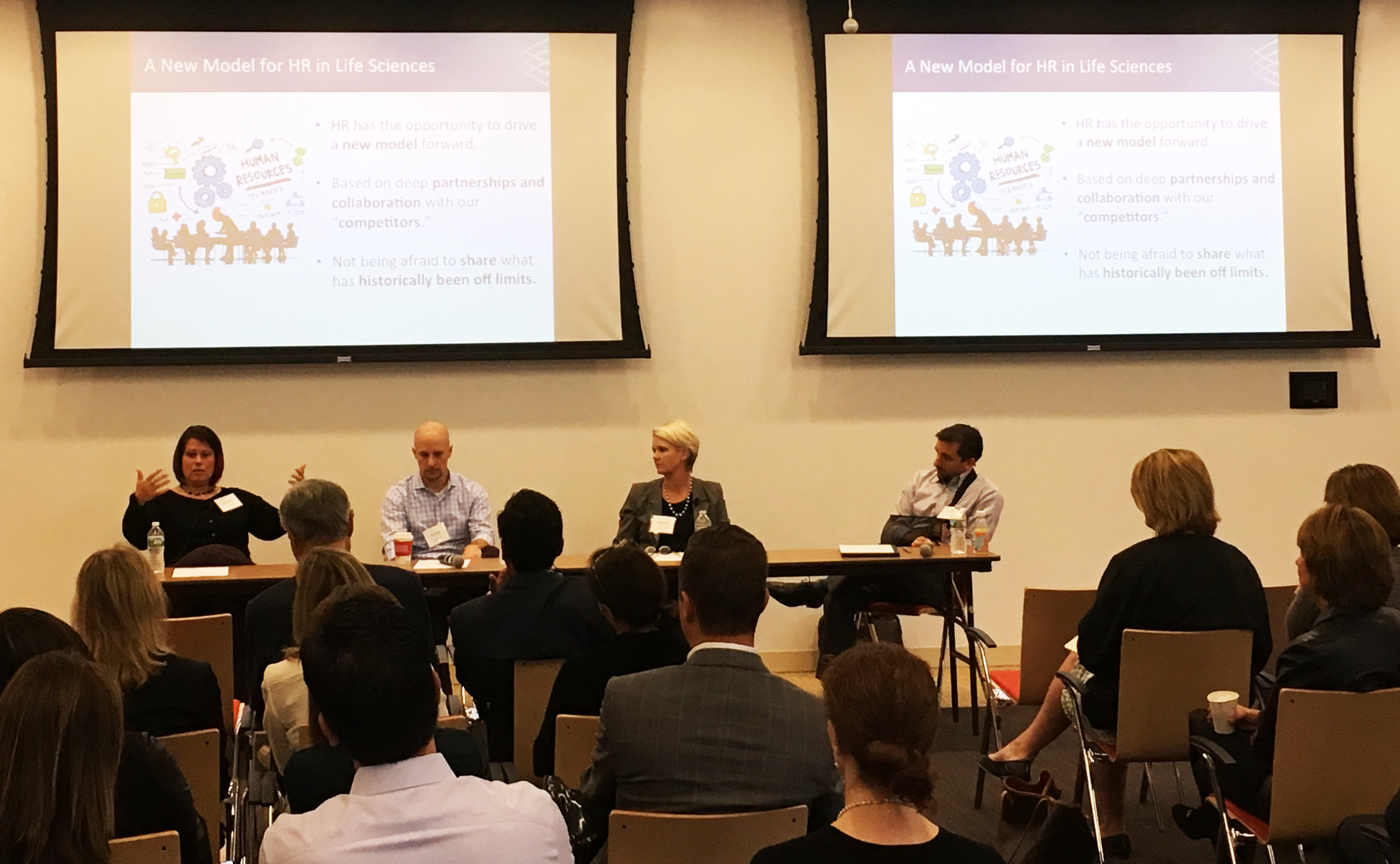As the war for top talent intensifies, many organizations will need to rethink how they look at recruiting and retaining candidates. Spencer Stuart recently hosted a discussion with 50 Boston-area human resources leaders on the role of HR in creating a best-in-class local talent pool. Ben Olds, executive coach at The Boda Group, moderated a panel that featured: Andy Porter, chief people officer at Broad Institute; Ginger Gregory, CHRO at Biogen; and Sarah Larson, partner and CHRO at Third Rock Ventures. Our conversation revealed three creative ways organizations can start thinking about talent in a highly competitive market.

(From right) Ben Olds moderating the discussion with Ginger Gregory, Andy Porter and Sarah Larson.
1. Institute a people-centric model.
Rather than viewing talent as a proprietary asset to protect, shifting to a “person-centric model” can help improve collaboration and fill skill gaps. For example, some organizations allow associates from neighboring institutions to work and collaborate on their premises to advance their research — without taking them on as formal employees. The rationale: If these associates are contributing to the organization, their work is being accelerated, and they are also helping their home institution — everyone wins. Similarly, tapping into the gig economy could ease the stress of trying to recruit long-term employees, especially for roles such as software engineering, where there is a significant shortage of talent and many tend to leave positions after a year or two.
2. Take talent rotation programs outside of your company’s walls.
To cultivate a pool of talent in your region, consider sharing talent with other companies. For entry-level roles, this could mean unified recruiting of local university students, encouraging them to stay in the area following their education, and possibly even working in rotational management training programs through a variety of companies, instead of multiple divisions in only one company. This approach to sharing could also apply to runner-up candidates for mid- and senior-level roles. A candidate with a great skillset that is not a culture fit for the hiring organization, for instance, may be well-suited for a neighboring company.
3. Don’t “disown” departing talent.
When someone leaves an organization, the thinking has to shift from “disowning” the person to understanding that the individual could return in the future with new experiences and skills that would make him or her a valuable contributor. It’s important to remember that everyone’s network expands when someone makes a move to a new organization, creating additional sources of talent. Additionally, companies and institutions from all industries could better track and engage with their alumni to continue the dialogue with that talent pool, as many consulting firms and large enterprises, such as GE, have successfully done for years.
Looking ahead
Successfully adopting these practices will require that organizations look at competitors as partners rather than adversaries. Keeping an open mind and focusing on each person’s and company’s contributions helps ensure that the talent pool will grow and develop for years to come.
Fleur Segal is a consultant in Spencer Stuart’s Boston office and a member of the firm’s Human Resources Practice. She brings nearly two decades of experience to her role, specializing in recruiting chief human resources officers, senior talent management and rewards leaders, as well as fulfilling HR generalist and specialist positions. Reach her via email and follow her on LinkedIn.
Nicki Fleming is a member of Spencer Stuart’s Human Resources Practice and is based in Boston. Reach her via email and follow her on LinkedIn.